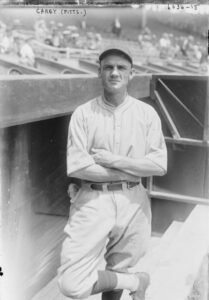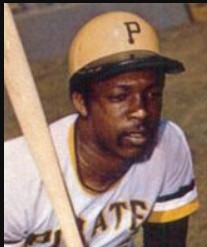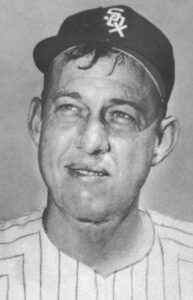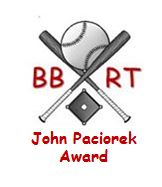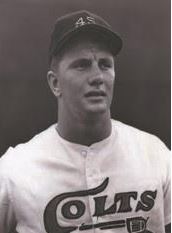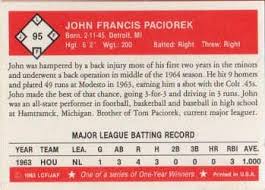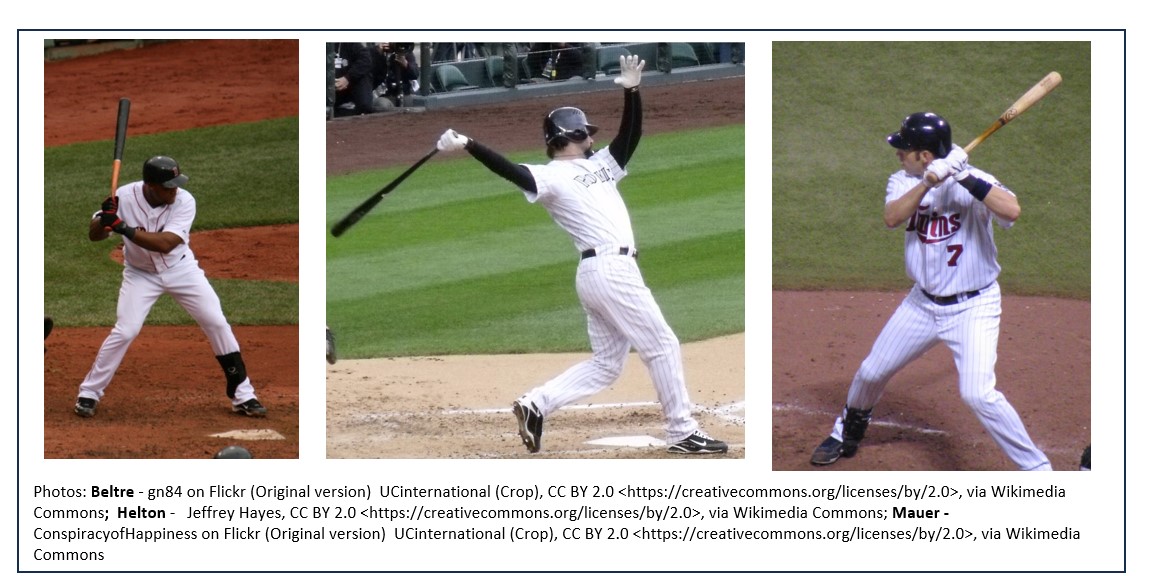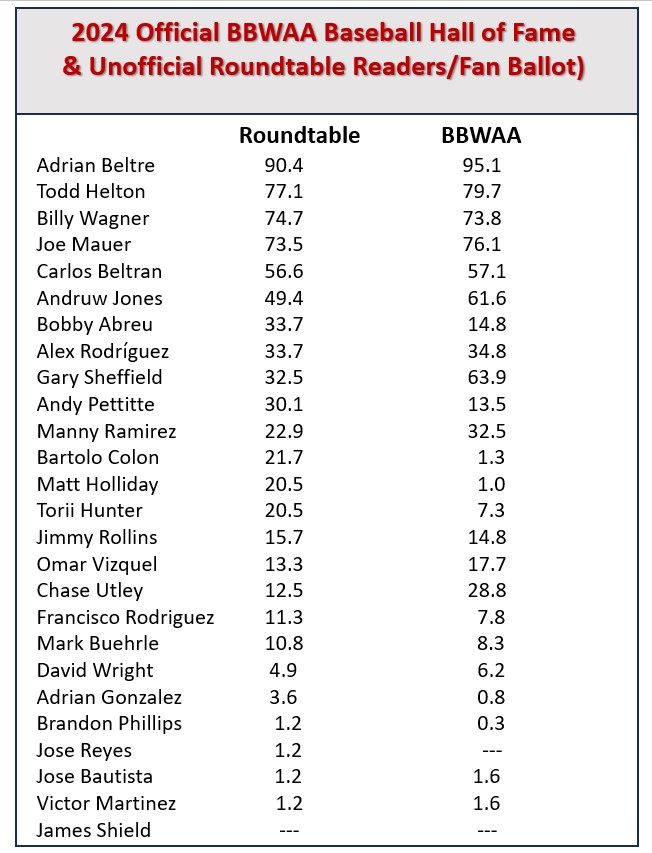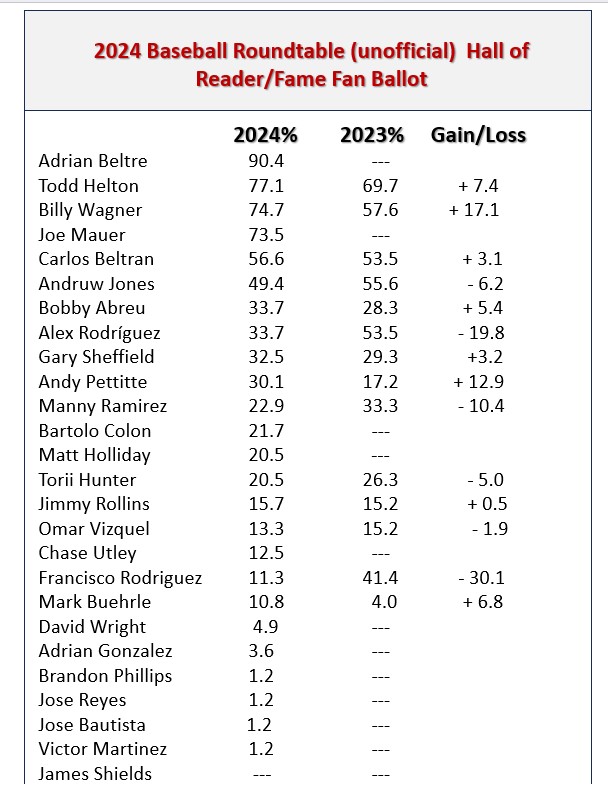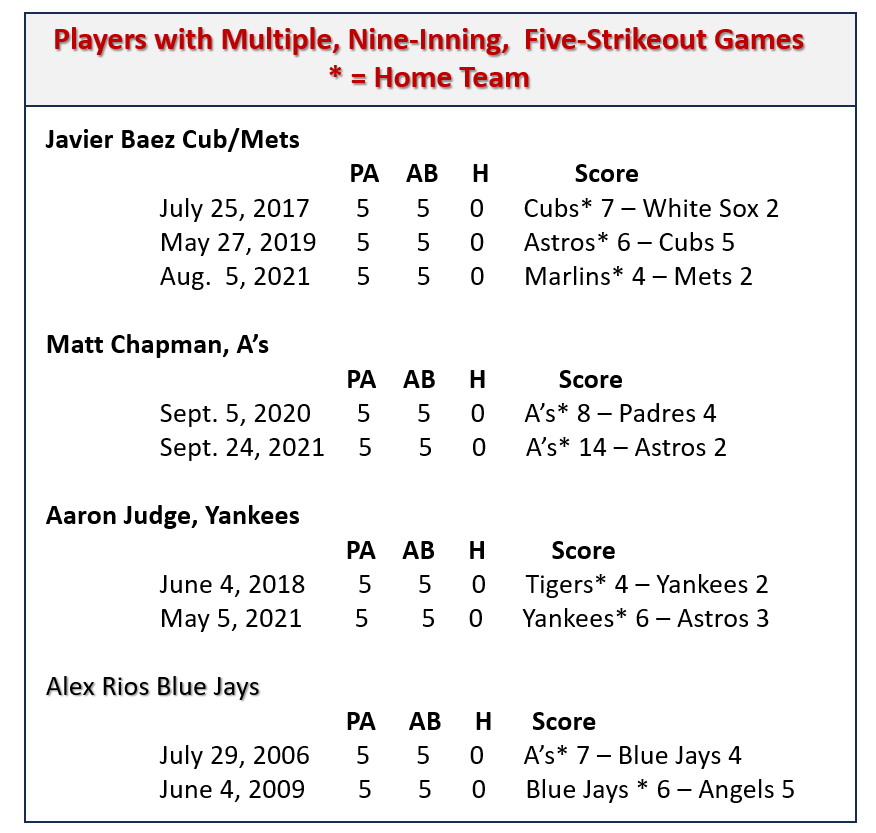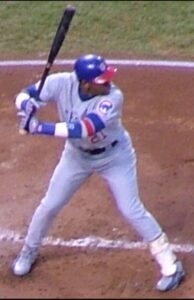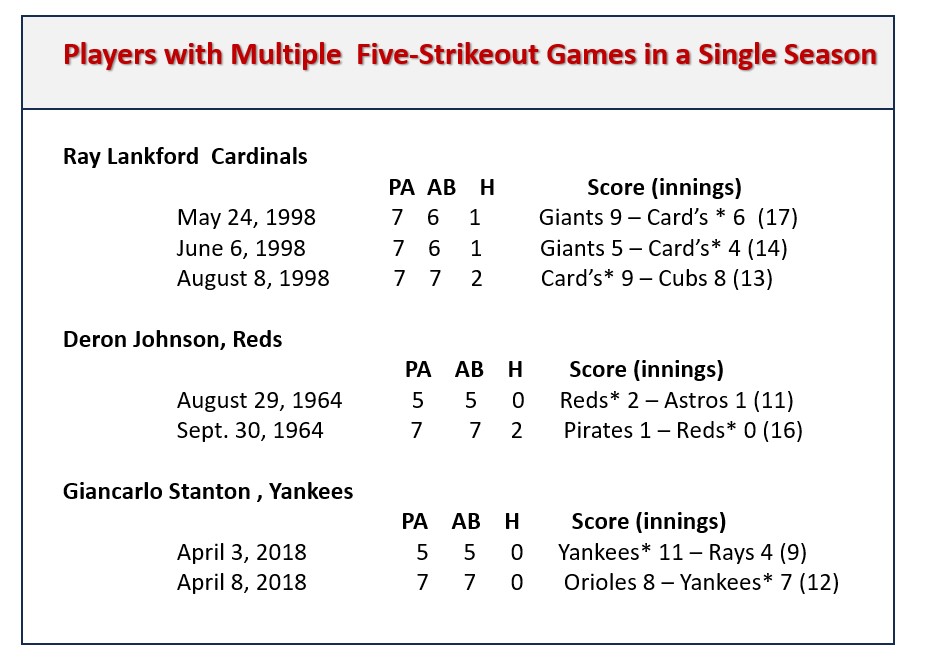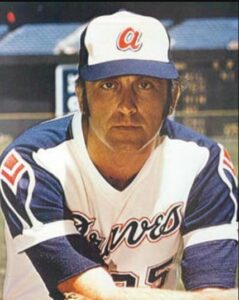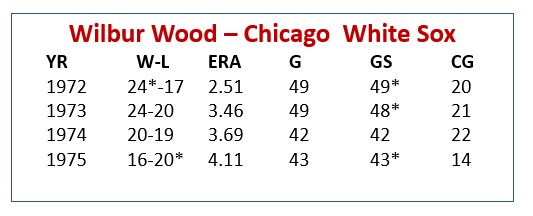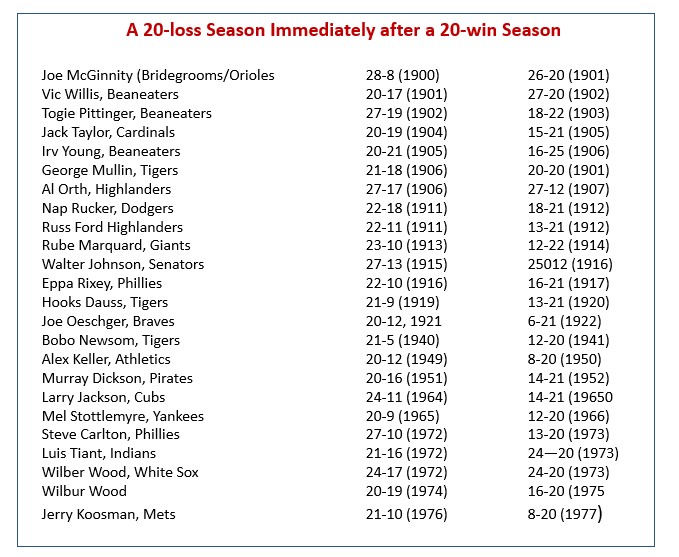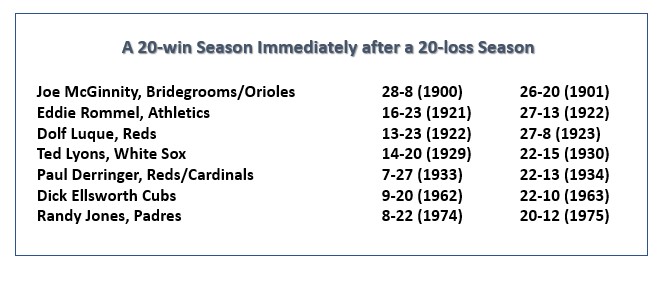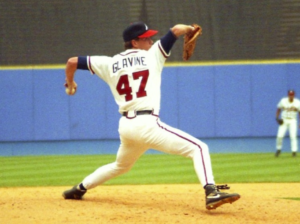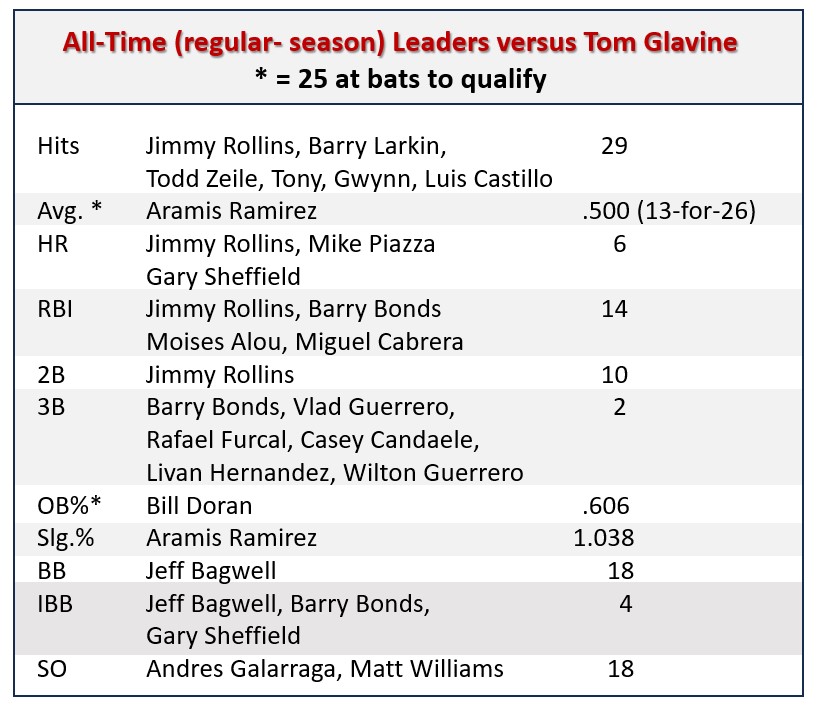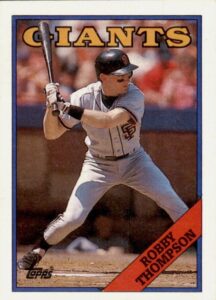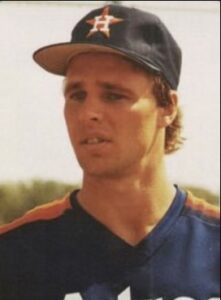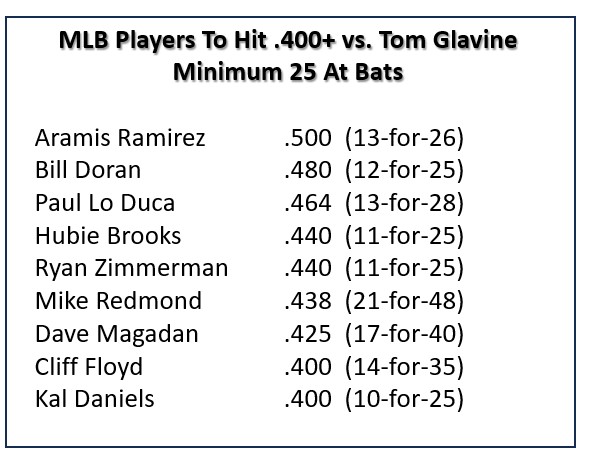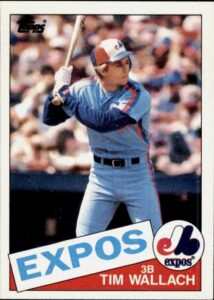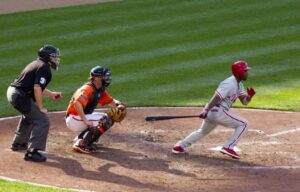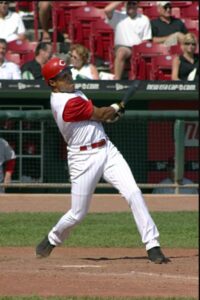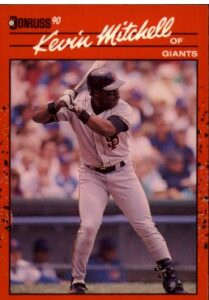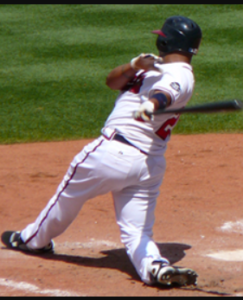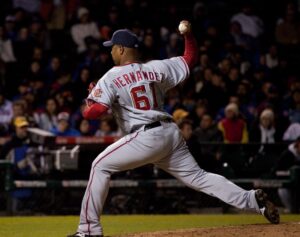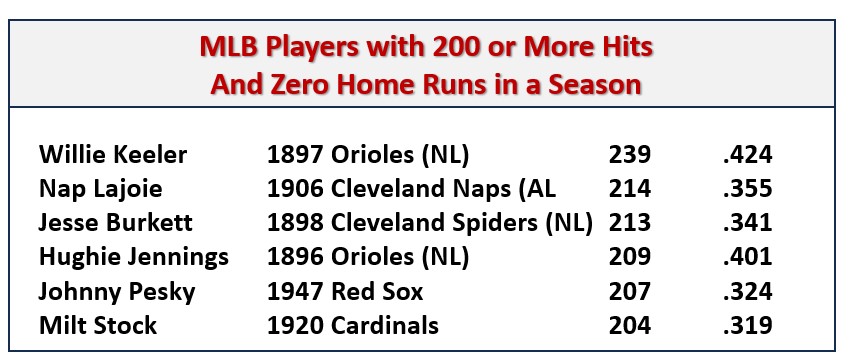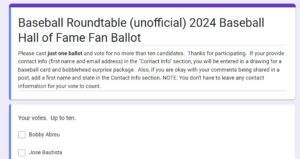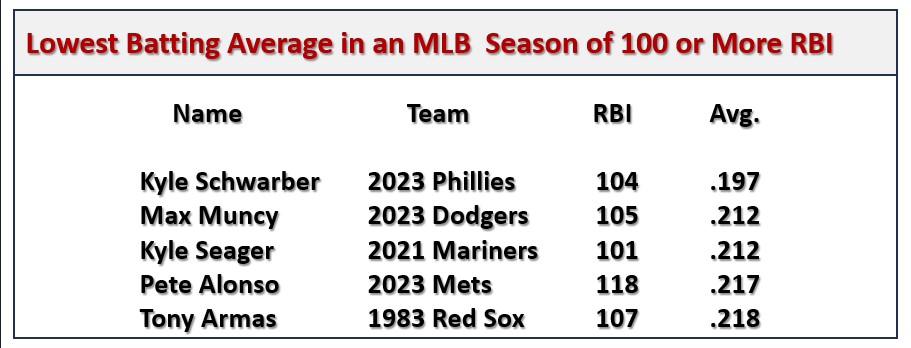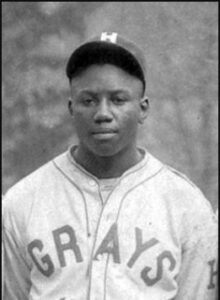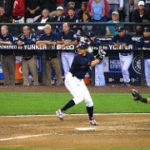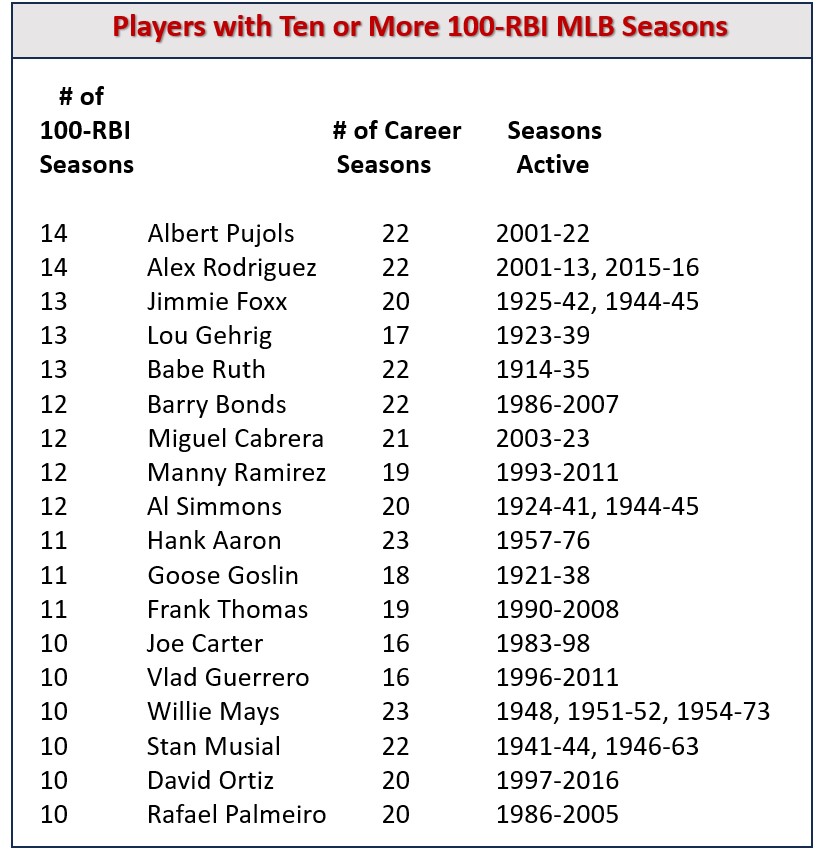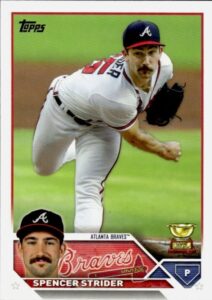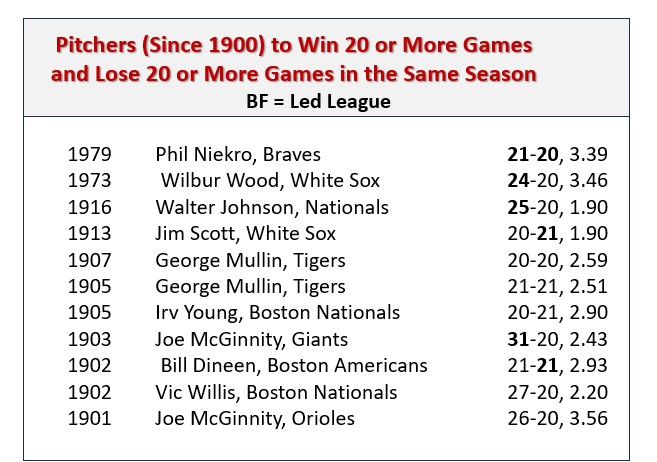Well, here are some more Baseball Roundtable musings, as we wait for Spring Training to open. This time it’s rare occurrences and oddities (unicorns, if you will) in some way relate to getting on base or on-base percentage. I hope you find them interesting and entertaining.
Bryce Harper and an Unblemished Hot-Pink Bat

Photo: Keith Allison, CC BY-SA 2.0 <https://creativecommons.org/licenses/by-sa/2.0>, via Wikimedia Commons
It was Mother’s Day (May 8) 2016 and the Nationals were facing the steaking Cubs at Wrigley Field. (The Cubs were 23-6 and were on a six-game wining streak.) Bryce Harper was batting in the three-hole and playing right field.
Like most players that day, he was using a special hot-pink Mother’s Day bat. Little did he know that he would never even swing that stick over the thirteen innings of play that afternoon – or that he was about to become the first (still only) player with seven plate appearances in a game and not a single at bat. And, to make this more of an MLB unicorn, Harper would reach base in every plate appearance for a 1.000 on-base percentage making him the first (still only) MLB player with seven plate appearances in a game, a 1.000 OBP for the game and not a single at bat. (Yes, in baseball, we count everything.)
It went like this:
- First Inning – One on, one out … Four-pitch walk off Cubs’ starter Jake Arrieta;
- Third Inning – One out, no one on … Five-pitch walk (one called strike) off Arrieta;
- Fourth Inning –Two runners on, two outs, score knotted 1-1 … Intentional Walk from Arrieta (the only IBB Arrieta would issue all season);
- Sixth Inning – One on, one out, Nationals up 3-1 … Hit by the first pitch from Trevor Cahill;
- Eighth Inning – No one on, score tied three apiece … Five-pitch walk from Cahill (one called strike);
- Tenth Inning – Two on, two out, score still 3-3 … Intentional Walk from Adam Warren;
- Twelfth Inning – Two on, two out, 3-3 score – Intentional walk from Justin Grimm.
(The Cubbies, by the way, won the game in the bottom of the 13th on a solo, walk-off home run by Javier Baez.
So, Harper came to the plate seven times, got on base seven times, saw 27 pitches (just two strikes) and never swung the bat. In that May 8, 2016 game, Harper also tied the MLB record for the most walks in a game (six).
An In-Post Diversion (more #OneThingLeadsToAnother)
Of the players with six walks in a game only Jimmie Foxx accumulated six walks in just six plate appearances and only Foxx did it in a nine-inning contest. It happened in a 12-8 Red Sox win over the Saint Louis Browns on June 16, 1938. The Hall of Famer came into the game hitting .350-19-71 over 49 games. (Some places report it at .349.) He finished the season at .349-50-175, leading the league in average and RBI. Over his career, Foxx was a nine-time All Star, Triple Crown winner and three-time MVP.
In the four-game Nationals/Cubs Series (May 5-8, 2016), Chicago clearly wanted little to do with Harper – no matter what color his bat. In 19 plate appearances, they walked Harper 13 times and hit him once. He ended up with one hit in four at bats for the series (he had a sacrifice fly) – which the Cubs swept.
In his first 12 MLB seasons, Harper, still active, has hit .281-306-889. He was the 2012 NL Rookie of the Year (his age-19 season), going .270-22-59, with 18 steals. He has been an All Star in seven seasons and he NL Most Valuable Player twice (2015 Nationals & 2021 Phillies).
_____________________________________________________
As always, at the Baseball roundtable, “one thing seems to lead lead to another.”
The Most Time on Base in A Game (9) – With Ties to a 1.000 On-Base Percentage
Max Carey
On July 7, 1922 – Pirates’ CF Max Carey came to the plate nine times in a Pittsburgh 9-8, 18-inning loss to the Giants (in Pittsburgh). Carey collected six hits (five singles and a double) and drew three walks. In the process, he set a (still standing) record for times on base in a single game and also set the record for most plate appearances for a batter with a 1.000 on-bae percentage for the game. Carey, a Hall of Famer, played 20 MLB seasons (1910-29 … Pirates, Dodgers) and hit .285-70-802, with 1,545 runs scored and 738 steals. He led the league in stolen bases ten times.
Stan Hack
On August 9, 1942, in the first game of a Sunday Twin Bill (Remember those?), Cubs’ 3B Stan Hack tied Max Carey’s record for most times on base in a single game (nine) and set the record for the most plate appearances in an MLB game in which the batter had a 1.000 on-base percentage.
Hack came to the plate ten times in a 10-8 Cubs’ 18-inning win over the Reds. He collected five hits (four singles and a double) and drew four walks. Although he had a 1.000 OBP for the game, unlike Max Carey (above), Hack did not reach base in every plate appearance. He also had a run-scoring sacrifice fly. Hack played 16 MLB seasons (1932-47), all for the Cubs. He hit .301-57-642, with 1,239 runs scored and 165 steals for his career, hitting .300 or higher in seven seasons. He led the NL in hits in 1940 and 1941.
Johnny Burnett
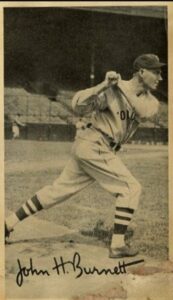 On July 10, 1932, Indians’ SS Johnny Burnett tied the record for times on base in a single game and did it without the benefit of a single free pass – setting the (still standing) MLB record for base bits in an MLB game at nine. In 11 plate appearances, Burnett collected nine hits (seven singles and two doubles), as the Indians lost to the Athletics 18-17 in 18 innings.
On July 10, 1932, Indians’ SS Johnny Burnett tied the record for times on base in a single game and did it without the benefit of a single free pass – setting the (still standing) MLB record for base bits in an MLB game at nine. In 11 plate appearances, Burnett collected nine hits (seven singles and two doubles), as the Indians lost to the Athletics 18-17 in 18 innings.
Burnett played nine MLB season seasons (1927-35 … Indians, Browns), hitting .284-9-213. 1932 was one of just two seasons in which he played at least 100 games (129). He went .297-4-53. Over his career, Burnett played 263 games at SS, 132 at 3B, 105 at 2B, one in LF and one in RF. Burnett’s nine-hit game came during a 12-game hitting streak (July 4-14), during which he hit .417 (25-for-60), with 21 singles and four doubles (just two walks).
_________________________________________
This Little Piggy Went to First Base – Eight Times
Thanks to some in depth research by Trent McCotter, we know that on June 18, 1893, as the Reds topped the Louisville Colonels 30-12 in Cincinnati, Fred “Piggy” Ward set a record for a nine-inning game by getting on base eight times – and he did it in eight plate appearances. As McCotter reports. “Although newspaper accounts of the specifics of the game are scant due to Cincinnati scoring 30 runs, all sources agree Ward was two-for-two with five walks and a hit-by-pitch.” Ward played in six National League seasons (1883, 1889, 1891-94 … Philadelphia, Pittsburgh, Baltimore, Cincinnati, Washington). He went .286-1-90, with 172 runs scored in 221 games.
Most Hits In A Nine Inning Game – Seven
Wilbert Robinson, Baltimore Orioles, June 10, 1892
Baltimore Orioles’ catcher Wilbert Robinson seems an unlikely candidate to collect seven hits in a nine-inning game. Robinson was a .273 hitter over 17 MLB seasons (1886-1902). Coming in to the 1892 season, his career average was .226 and in 1892, he hit .267 for the campaign.
On the day of his seven-hit performance, Robinson was catching and batting eighth in the Orioles’ lineup. The Orioles apparently had on their hitting shoes that day, as they led the St, Lous Browns 25-2 by the end of the sixth inning – eventually winning 25-7.
Robinson’s day:
First Inning – Single; Second Inning – Single; Third Inning – Single; Fourth Inning – Double; Fifth Inning – Single; Seventh Inning – Single; Ninth Inning – Single.
While Robinson scored just one run in the contest, he drove in a (then-record) 11 runs in his seven-hit game. In his 89 other 1892 appearances, he drove in 35 runs.
Robinson was inducted into to the Baseball Hall of Fame – as a manager – in 1945. In 19 managerial seasons, his teams went 1,399-1,398. He won a pair of pennants (1916 and 1920) with the Brooklyn Robins. As a player, Robinson hit .273-18-722, with 637 runs scored and 196 stolen bases over 17 seasons (1,371 games).
Picking Up The Pace
In the first six years of his MLB career (1886-91, with the Philadelphia Athletics and Baltimore Orioles of the American Association), Robinson hit .226-9-205, with 107 steals (in 479 games). From 1892 through 1902 (Baltimore and St. Louis in the NL and Baltimore in the AL), he hit an even.300, with nine homers and 517 RBI in 892 games. He topped .300 in five of those 11 campaigns.
Rennie Stennett, Pittsburgh Pirates – September 16, 1975
Wilbert Robinson seven-hit record would stand alone for more than 80 years. Then on September 16, 1975 – as the Pirates topped the Cubs 22-0 in Chicago – Pittsburgh leadoff hitter and 2B Rennie Stennett would go seven-for-seven. That day, Stennett tied an MLB record by collecting two hits in one inning twice in the same game.
Stennett’s day went:
First Inning – Lead-off double off Rich Reuschel and an RBI single off Tom Dettore. Stennett scored on a single by 3B Richie Hebner and later in the inning on a single by 1B Willie Stargell.
Third Inning – One out Single off Dettore. Stennett scored on a Hebner home run.
Fifth Inning – Leadoff double off Dettore and an RBI-single off Oscar Zamora. Stennett scored a run on a single by CF Al Oliver.
Seventh Inning – Leadoff single off Buddy Schultz, later scoring on a single by RF Dave Parker.
Eighth Inning – Two-out triple off Paul Reuschel.
In the game, Stennett scored five times and drove in two.
Brotherly Love
In Rennie Stennett’s seven-for-seven, nine-inning game, he collected his first hit of the game off Ric Reuschel and his final (and seventh) hit off the game off Paul Reuschel.
Stennett came into the game hitting .279 on the season (138 games). He raised his average to .287 that day – and would finish the season sat .286-7-62, with 89 runs scored.
Stennett played in 11 MLB seasons (1971-81 … Pirates, Giants), hitting .274-41-432 in 1,237 games. He was signed as an amateur free-agent (out of Panama) in 1969 and called up to the Pirates in 1971, after hitting .344 at Triple- A. He made his MLB debut July 10 and hit .353-over 50 games for the Pirates that season.
Also, a Lucky Seven-for-Seven
The Tigers Cesar Gutierrez also had a seven-for-seven day – on June 21, 1970 against the Indians. His Lucky Seven came in a 12-ining 9-8 Tigers’ victory.
Two Hits In A Single Inning – A Rare Occurrence
In the paragraphs on Rennie Stennett’s seven-hit, nine-inning game, it was noted that Stennett tied an MLB record with two hits in an inning twice in one game. Statistics from before 1900 can be a bit sketchy, but since 1900, three additional players have officially recorded two hits in an inning twice in a game. Here they are:
Max Carey, June 22, 1925
On June 22, 1925 – as his Pirates topped the Cardinals 24-6 in St. Louis – CF and leadoff hitter Max Carey went four-for-five with four singles, a walk, a hit by pitch, four runs scored and one RBI. Carey got his day off to a good start, opening the game with a single off Flint Rhem. Later in the initial inning, with the Pirates already up 6-0, Carey collected a second single off Rhem (knocking him from the game). In his next at bat, in the third inning, Carey was hit-by-a pitch (Johnny Stuart). Carey then grounded out off Stuart in the fifth and walked off Stuart in the seventh before collecting a pair of singles off Stuart in a ten-run Pirates’ eighth. Carey’s career numbers have already been discussed earlier in this post.
On July 29, 1928, as the Indians rapped the Yankees 24-6 in Cleveland, Cleveland 3B and cleanup hitter Johnny Hodapp went five-for-seven, with a double, four runs scored and four RBI. In the game, Hodapp collected two hits in the second and sixth innings.
Hodapp led off the second inning with a single off Wilcy Moore and, later in the inning, delivered an RBI single off Hank Johnson (making the score 15-1). The inning ended with Cleveland holding a 17-1 lead.
It quieted down over the next three frames, but – as Cleveland added six runs in the sixth – Hodapp singled off Johnson to open the inning and had a two-out RBI single (off Archie Campbell) to cap the scoring.
Hodapp played nine MLB seasons (1925-27 … Indians, White Sox, Red Sox), going .311-28-429 in 791 games (He played in 100 or more games in just four campaigns, suffering a broken ankle in 1926, knee injury in 1929 and more knee issues in 1931.) In his final MLB season – for the 1933 Red Sox – at ag 27, Hodapp hit .312-3-54 in 115 games.
A Season In The Sun
In 1930, Johnny Hodapp played in 154 games (19.4 percent his MLB career total) and led the AL in base hits with 225 and doubles with 51, while hitting .354, with nine home runs, 121 RBI and 111 runs scored. That stellar season represented 25.6 percent of his career MLB hits, 29.4 percent of his runs scored; 28.2 percent of his RBI; 30.2 percent of his doubles; and 32.1 percent of his home runs.
Sherm Lollar April 23, 1955
On April 23, 1955, as his White Sox drubbed the Athletics 29-6 in Kansas City, Chicago catcher Sherm Lollar, batting eighth, went five-for-six, with two-home runs, a walk, four runs scored and five RBI. It was a career day for the career .264 hitter. Lollar also tied an MLB record by collecting two hits in one inning twice in the game. He led off the second inning with a home run off Bobby Shantz and, later that frame, added a two-run single off Lee Wheat (making the score 9-3). He led off the sixth inning (the White Sox were up 16-6 by this time) with a single off Moe Burtschy and, later that inning, added an RBI single off Bob Spicer. Lollar played 18 MLB seasons (1946-63 … Indians, Yankees, Browns and White Sox). He was an All Star in seven seasons and a three-time Gold Glover. His final stat line was .264-155-808.
Primary Resources for this post: Baseball-Reference.com; Baseball-Almanac.com; “Consecutive times Reaching Base: Ted Williams Dethroned by an Unlikely Record Holder,” by Trent McCotter, 2006 Baseball Research Journal (Society for American Baseball Research); “June 10, 1892: Seven hits in seven tries for Wilbert Robinson,” by Jimmy Keenan (Society for American Baseball Research).
A BASEBALL ROUNDTABLE REQUEST … I COULD USE YOUR INPUT
As some of you may be aware, Facebook recently has removed considerable number of my posts (as far back as 2018) from my own FB Page and from FB pages of baseball-focused groups I belong to. Those posts typically included a synopsis of or highlights from a Baseball Roundtable blog article and a link to the article. (It is an important method I use to notify fellow baseball fans of new posts.) The links seem to be the issue for Facebook, as Facebook now seems to reject new posts that include a link to the blog site or to a specific article on the blog. Note: the blog site at baseballroundtable.com is not affected, nor are new post notifications on X (formerly twitter) – just the notification Facebook posts.
I am confident the removals are in error and have appealed the removals multiple times in multiple appeal avenues provide by FB, but have received no reply. The process is daunting.
To aid in my response, I have developed a brief survey that addresses the FB Guidelines that FB says it “looks like” the removed content violated. Reader responses will help me better understand/appeal/respond to this situation. The more responses, the better prepared I will be to continue my appeal FB’s actions or correct any issues that surface.
I sincerely appreciate your taking the time to respond. This is the only time I will post the survey link here. (I will call for responses once more from members of the baseball -focused Facebook groups I post with.)
Note: The survey is anonymous. I will receive no information regarding any respondents. Click here to access the survey.
Baseball Roundtable – Blogging Baseball Since 2012.

 Baseball Roundtable is on the Feedspot list of the Top 100 Baseball Blogs. To see the full list, click here.
Baseball Roundtable is on the Feedspot list of the Top 100 Baseball Blogs. To see the full list, click here.
Baseball Roundtable is also on the Anytime Baseball Supply Top 66 Baseball Sites list. For the full list, click here.
I tweet (on X) baseball @DavidBaseballRT
Follow Baseball Roundtable’s Facebook Page here. More baseball commentary; blog post notifications.
Member: Society for American Baseball Research (SABR); Negro Leagues Baseball Museum; The Baseball Reliquary.
P1023

